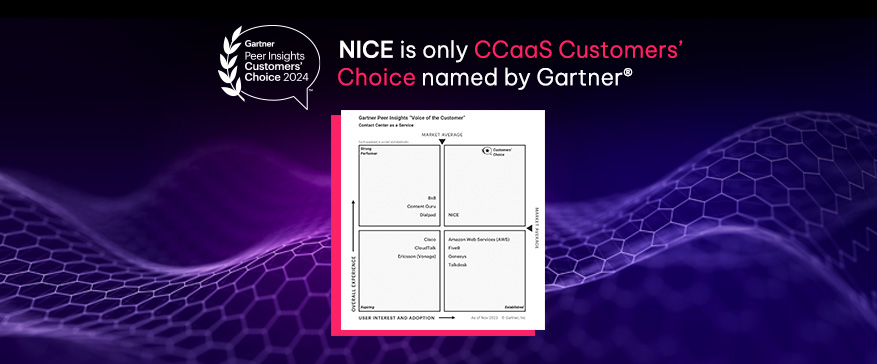How digital transformation impacts government customers
At the DMV and beyond, digital transformation in the public sector has relieved some of the pressure (as well as some of the notoriously long lines) from in-person citizen experiences by empowering customers to complete many common transactions online. But sometimes, even those digital experiences fall short.Appointments can be so hard to schedule. For example, stories in recent years have reported desperate constituents resorting to buying appointments from third-party sites. One extreme case involved a woman who rode a horse to the DMV to resolve an issue with her driver’s license.Today’s citizens have been conditioned by their behavior as consumers and the seamless journeys they experience when interacting with financial institutions, retailers, telecom companies, and other private sector organizations.They now expect government entities to provide the same personalized, timely, streamlined experiences, with next-level support on the channels they use and prefer—whether that’s at the DMV, applying for assistance, inquiring about a utility issue, or paying tax bill.Long wait times, repeat calls, and drawn-out processes are unacceptable to people, so today’s government contact centers must step up to deliver experiences that exceed expectations.It’s not just the right thing to do for your customers; it’s mandated at the federal level.The imperative to improve CX
In December 2021, President Biden issued an executive order related to transforming CX and service delivery, which notes:“Government must be held accountable for designing and delivering services with a focus on the actual experience of the people whom it is meant to serve.” [1]It goes on to say that incorporating direct feedback is key to improving federal government programs, processes, and services:“Further, the Federal Government’s management of its customer experience and service delivery should be driven fundamentally by the voice of the customer....”How VOC helps transform CX
An effective voice of the customer (VOC) program is an organization-wide, omnichannel effort. It should include a thorough analysis of customer feedback data gathered from surveys completed via IVR, web, email, SMS, chat, and other digital channels, like messaging; combined with text/speech/sentiment analytics, agent feedback, and operational data—resulting in actionable insights.At any level of government, a holistic VOC program will help your organization…- Know citizen/customer pain points
- Know your agents
- Know your limitations
Moving the needle with VOC
Voice of the customer has been found to have a significant, positive impact on service levels. For example, a recent research study by Aberdeen found that contact centers and service organizations within government entities that have VOC programs saw a 13.7% YoY improvement in average handle times and 7.7% YoY improvement in first contact resolution (FCR). [2]
Know customer pain points
First, by asking for customer feedback on every channel, you’re reinforcing the message that your organization truly cares about delivering a quality experience.Also, direct feedback gives your contact center the data it needs to personalize customer interactions, which is what the majority of consumers have come to expect—and get frustrated about when it doesn’t happen. [3]When you use a VOC solution to analyze direct and indirect customer feedback in conjunction with operational data, you gain a contextualized view that will help you uncover top customer pain points, and know which touchpoints are impacted.By sharing that insight with contact center and service leaders in a unified dashboard, you empower them to prioritize the activities, workflows, and technologies that need to be addressed in order to alleviate critical issues. It also helps the right employees close the loop with unhappy customers in a personalized, proactive way.Know your agents
In a recent contact center research study, nearly all respondents (97%) said that high agent engagement correlates with high agent performance, but unfortunately, only 24% rated their agents as highly engaged. [4]Agent engagement can be an especially pointed issue in the public sector, where, as noted above, pop culture has made the job nearly synonymous with inefficiency and frustration.Customer feedback can help service leaders improve employee engagement and morale by identifying, highlighting, and publicly recognizing agents who are providing a superior experience.It can also help identify internal processes that are demoralizing agents or preventing them from consistently meeting customer expectations. A robust VOC program also incorporates voice of the employee, with agent feedback providing much-needed context to customer feedback.Know your limitations
When combined with operational data, customer feedback data can help you identify capacity or technology issues that are impacting your ability to deliver outstanding CX.For example, you can shorten handle times by observing direct and indirect customer sentiment and feedback to reveal the top reasons for lengthening resolution times. Then, you can prioritize improving the workflows and technologies directly impacting lengthy handle times.You can also look at how repeat contact traffic aligns with customer sentiment and feedback data to reveal which actions result in repeat contacts. As mentioned above, government institutions using VOC in these ways reported a 7.7% YoY improvement in FCR and nearly 14% improved handle times.A mini case study: operationalizing VOC at a municipal agency
Because they want to deliver world-class customer service, one of the busiest government contact centers in the country and winners of the NICE CX Excellence Award for Best CX Innovation in 2021, The County of San Diego Health and Human Services Agency implemented a VOC program to help them collect customer feedback and can take meaningful action from it.As Mike Schmidt, the agency’s Human Services Operations Manager, explains, they have been able to identify and resolve issues that they wouldn’t have otherwise known about. For example:“Our customers complained it took too long to receive a return call. Initially, we were returning calls in 30-minutes; now we’re currently at two minutes—a 93% reduction!” He notes how willing customers have been to provide feedback and how it’s helped the agency improve service:“We send customers post-call surveys using CXone Feedback Management which tell us exactly where we’re doing well and areas for improvement. The feedback is that we’re doing much better. In fact, the number of satisfaction surveys we’ve received back from customers grew 511% and the number of positive surveys increased 445%. It’s also encouraging that negative feedback fell 5%.”You can read the full case study here.Ask for and act on customer feedback to improve customer service
Mandated or not, to meet customers’ heightened expectations, public sector organization at the municipal, state, and federal level need to be gathering and acting on customer feedback through a comprehensive VOC program.As Aberdeen VP and Principal Analyst Omer Minkara notes in The ROI of Voice of the Customer in Government Institutions:“The opportunity for improving service excellence are virtually endless for institutions that continuously track and use VOC data to fuel their CX program.” [5]By operationalizing VOC insights, any government organization can improve agent engagement and deliver the kind of modern, personalized service that today’s customers have come to expect.CTA: Download the full Aberdeen ROI research report now[1] The White House, Executive Order on Transforming Federal Customer Experience and Service Delivery to Rebuild Trust in Government, (2021)[2] Aberdeen, The ROI of Voice of the Customer in Government Institutions, (2022)
[3] McKinsey & Co., Next in Personalization 2021 Report, (2021)
[4] ICMI, The Contact Center Workforce of the Future, (2021)
[5] Aberdeen, The ROI of Voice of the Customer in Government Institutions, (2022)









